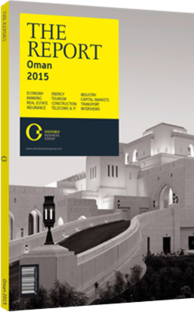Facilitating home ownership for lower-income segments
According to the National Centre for Statistics and Information, the average Omani household income increased from $1660 a month in 2000 to $3050 a month in 2011. While a significant number of higher-income citizens have helped sustain the growth in the luxury real estate market, there remain gaps in housing for lower income groups. The government of Oman has therefore implemented several initiatives that help Omani citizens access adequate housing and achieve the country’s broad economic diversification goals by boosting the real estate sector.
Striking A Balance
The World Property Channel estimates that affordable housing in Oman needs to be priced within the range of $78,000 to $156,000, while the cost of low-income housing should be capped at $104,000. A focus on job creation through major public investments and an economic diversification programme has helped drive growth in the economy. This has had an impact on average household budgets, in turn influencing investments in the residential real estate sector. Furthermore, the government also recently approved significant increases in the minimum wage.
New policies are also in place to facilitate access to finance and to address the need for affordable housing. A social housing programme provides interest-free loans to citizens in order to enable access to credit to purchase residential property. In 2013 the Ministry of Housing (MoH) granted in excess of OR22m ($57m) for over 1000 housing loans under the programme. In 2013 the government revised the criteria for accessing or qualifying for interest-free loans provided to lower-income households. The new policies increased the credit limit for the loans from OR20,000 ($51,800) to OR30,000 ($77,700), reflecting in part the rising cost of purchasing houses in the country. To encourage older citizens to access housing finance, the government has also removed a restriction on the age of applicants.
However, access to credit alone will not address the issues because of the shortfall in low-income housing and a lack of interest in developing more of these affordable housing units. Developers have understandably been more focused on the higher-end market as the return on investment is generally greater. The lack of incentives for the private sector to build low-income housing means authorities will have to either construct housing units or partner with private developers.
Incentivising Affordable Housing
The housing assistance programme for households with incomes below OR300 ($777) per month is one example. The housing assistance programme, supported with an OR80m ($207.2m) grant from Sultan Qaboos bin Said Al Said, helps people in the lowest income bracket build homes. The programme assesses needs of households via an application process and then grants up to OR20,000 ($51,800) to either build or improve existing houses. The MoH also allows successful applicants to purchase property for less than OR25,000 ($64,750) if land for housing is not available or the household does not have a house to upgrade. Recently, the MoH streamlined the application procedure and assessment process to ensure timely loans. Specific initiatives include decentralising the approval process via independent application assessment committees in each governorate. In 2013 the MoH allocated more than OR103m ($266.7m) under the programme, supporting a total of 4353 families across various governorates. The majority of these families were in the Al Batinah North and South Governorates, with 841 units and 452 units built in these areas, respectively. Muscat had 299 units built under the programme while the Dhofar Governorate saw 479.
Finally, the MoH is also involved in directly constructing residential buildings across various governorates in Oman. In 2013 the Ministry committed to building over 378 residential units at a total cost of over OR15m ($38.8m) under the scheme. The MoH is making good progress with the construction of these units. In 2014 it completed construction of over 150 residential units at a total cost of over OR4m ($10.4m). This level of support is expected to help ensure that developments in Oman’s property sector also benefit poorer citizens.
You have reached the limit of premium articles you can view for free.
Choose from the options below to purchase print or digital editions of our Reports. You can also purchase a website subscription giving you unlimited access to all of our Reports online for 12 months.
If you have already purchased this Report or have a website subscription, please login to continue.

